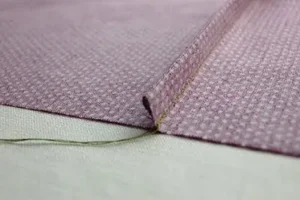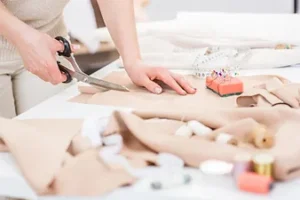Choosing the right fabric for your sewing project is crucial for achieving the desired look, fit, and functionality. With countless fabric options available, it can be overwhelming to make the right choice. However, by considering factors such as project type, fabric properties, care requirements, and personal preferences, you can confidently select the perfect fabric for professional-looking results.
1. Understand Project Requirements:
Begin by evaluating the purpose and nature of your project. Is it a garment, home décor item, or accessory? Consider the level of durability, drape, stretch, breathability, or insulation required for the specific application. For example, a flowy dress may require a lightweight and drapey fabric, while upholstery demands a sturdy and stain-resistant material.
2. Study Fabric Properties:
Familiarize yourself with the various fabric properties to narrow down your options. Consider factors such as fiber content (cotton, silk, wool, synthetic), weight (lightweight, medium, heavyweight), weave (plain, twill, satin), and stretch (stretchy, non-stretch). Research how these properties affect the look, feel, and performance of the fabric to choose the most suitable one.

3. Take Fabric Care into Account:
Think about the maintenance requirements of the fabric. Will it require frequent washing, dry cleaning, or special handling? Consider whether you’re comfortable with the care instructions and if they match your lifestyle. Fabrics that are machine washable and low-maintenance might be more suitable for everyday items, while delicate fabrics may be ideal for occasional and special occasion wear.
4. Consult Pattern Suggestions:
If you’re using a sewing pattern, it often includes fabric suggestions. Pay close attention to these recommendations as they are based on the pattern’s design, intended fit, and desired outcome. Patterns may suggest certain fabrics for optimal results, providing a valuable starting point for selecting the right fabric.

5. Evaluate Personal Preferences:
Consider your personal style, comfort preferences, and colour choices. A fabric’s texture, pattern, and colour can significantly impact the final look of your project. Decide whether you prefer natural or synthetic fibers, solid or patterned designs, or a specific colour palette that aligns with your vision.
6. Obtain Fabric Samples:
If possible, obtain fabric samples before committing to a particular fabric. Samples allow you to assess the fabric’s texture, drape, stretch, and colour accuracy in person. This hands-on approach can help you make more informed decisions, especially for high-stakes projects.

7. Seek Expert Advice:
If you’re uncertain about fabric choices, consult experienced sewists, fabric store staff, or online sewing communities. These individuals can provide valuable insights and recommend suitable fabrics based on their own experiences and expertise.
By considering the project’s requirements, fabric properties, care instructions, pattern suggestions, personal preferences, and seeking expert advice when needed, you can confidently select the perfect fabric for your sewing project. Remember that fabric selection plays a vital role in achieving professional results and ensuring the functionality and overall quality of your creations. Happy sewing and may your fabric choices enhance the success of your projects!




